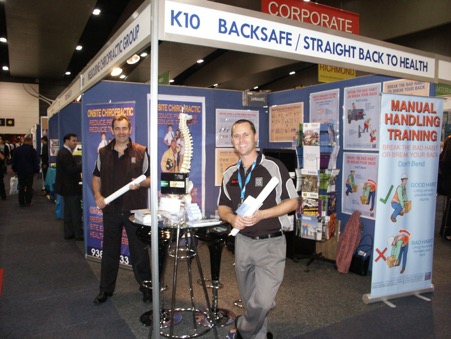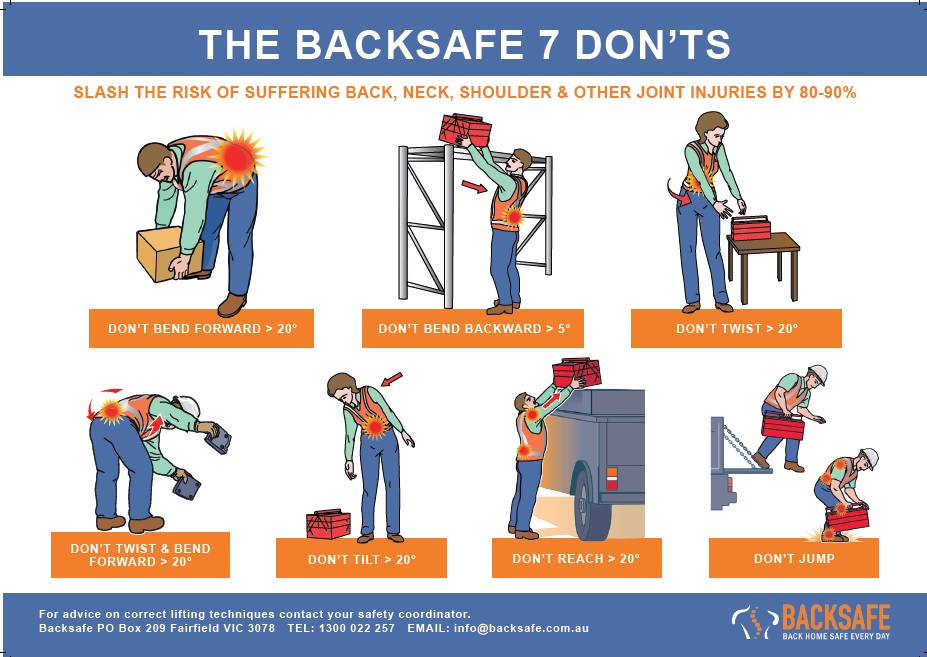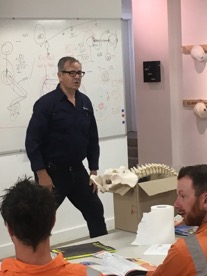Musculoskeletal injuries are being built up in the bodies of working people every day, costing our governments and our insurers billions of dollars per year, not to mention the pain and suffering of our working people and the consequential disadvantages suffered by their families.
Safety professionals can be the gateway to solving this epidemic in a practical, efficient and effective manner, but to do this they must re-think current practices and change current approaches to this entire issue.
There are many ways to look at the problem of manual handling. How we define the problem will determine how we see the solution. This means we must see the problem as it is, not in terms of what we think it is or what the text books say it is. The fact is manual handling injuries are continuing to increase and manual handling problems remain unsolved and this is expected to continue into the future unless we make dramatic changes to our current approach.
Years of research by members of the Backsafe Team suggest that the manual handling problem exists because most staff have no awareness of the physical work habits they employ when carrying out manual handling tasks. These unconscious work habits often use the joints of the body against their intended design. This type of body movement occurs throughout the working day in general and job specific tasks and builds up hidden injury in the joints. Over time these hidden injuries build up into musculoskeletal disorders throughout the workforce. Without changing these continual unconscious work habits workplace musculoskeletal disorders are unavoidable.
The fact is the manual handling problem we face today is comprised of a number of interconnected elements such as unconscious physical habits, ongoing injury and lack of awareness of the real issues – and it is not until we tackle all elements together that we can really begin to address one of society’s greatest challenges.
When a young person or an experienced hand begins a new job that requires a degree of manual handling, you will find that within a week or two they know virtually every aspect of that job and can do it without thinking. Learning to do a job consists of building up an aggregate of physical habits that are specific to the job at hand. Once the habits are built up they will continue to come into operation automatically and unconsciously, that is “without thought”. In this situation the person does not determine how they perform the work as their ingrained habits take over. In this way and in some situations we don’t work – our habits work us.
Unconscious work habits are not always a bad thing. Human beings will always develop unconscious physical habits in the fulfillment of daily tasks. This includes their range of work tasks which they may carry out each and every day. Surprisingly enough, trying to get people to think consciously and deliberately while they carry out their daily and routine tasks is not the answer. Consider how many times we have all heard the catchcry “bend your knees and keep your back straight”. Yet the manual handling epidemic persists?
The only real solution to the manual handling problem is the development of new unconscious physical habits in the body. These are new body movements that don’t have to be consciously remembered yet work the joints of the body in the right way. To achieve this dramatic change in workers, an entirely different approach to manual handling training is needed.
Any training that does not address the problem of unconscious physical habits that work the joints of the body against their intended design will result in misdirected effort and a waste of time and money. The only training theory that has any genuine value must educate staff to see the value of incorporating good manual handling movements into their unconscious physical habits. These new body movements must be specific to their job and work the joints of the body in the right way. By doing this workers will eliminate the risk of accumulating hidden injuries and reduce the chance of building musculo-skeletal disorders and their disabling effects.
The Backsafe Manual Handling Training Program is based on this new approach. Our primary step is to demonstrate to workers the value of incorporating non-harming habits into their physical body movements. This forms the necessary knowledge base that has to be in place before the practical side of manual handling training is commenced.
The practical side of our training then has this one main focus and that is to teach the manual handlers how to incorporate unconscious physical habits into their bodies which are specific to their job and which work the joints of the body in the right way. This is in direct contrast to other manual handling training that try to teach workers to consciously remember lifting techniques and to think that exercises and stretches will prevent injury in spite of the presence of injury producing bad manual handling habits.
As you can see it all depends on how we define the problem as to how we develop a solution.
The Backsafe Manual Handling Training Program is designed around this new approach which makes it unique from all other Programs. We have developed and revised our approach over 26 years of training a wide range of workers across Australia and know with full certainty that this is the only way to truly tackle the manual handling epidemic that we face today.
For this reason, we encourage you to truly question your approach to a manual handling training program that you will use and check to see if it has been designed to deal with unconscious physical habits in this way. Because, if it doesn’t then we can guarantee that you will be wasting your time and your money. Other training programs might look good and might be well packaged but if these don’t address the real issue then all you are doing is addressing short term issues with no real and lasting positive behaviour change or no real and lasting reduction to your liabilities and costs.
Contact us today to discuss your Backsafe Manual Handling Training Program
1300 022 257
www.backsafe.com.au




